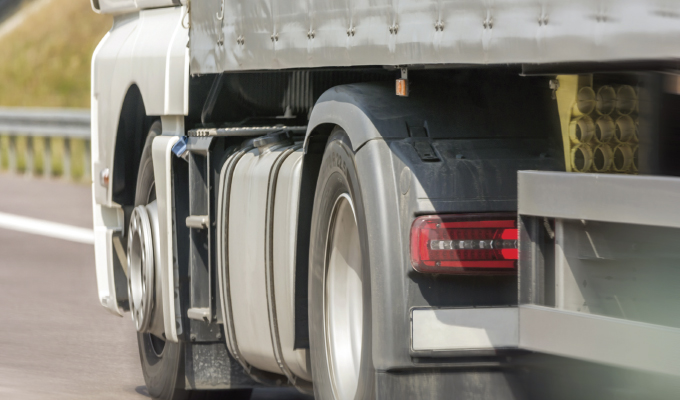All truck manufacturers are fighting to meet emissions targets, whether those targets are set by the manufacturer themselves or, especially, targets set by the government. Because internal combustion engines have been around for well over a century, proving to be a reliable powertrain, manufacturers are straddling the line between holding on to tried and true methods and reinventing the wheel.
Thankfully, meeting emissions targets hasn’t required an overhaul of engine design—yet. And some manufacturers are becoming really great at small tweaks and modifications that decrease the amount of emissions a diesel engine pumps into the environment. One such tweak lies in the check valve, specifically, a Parker Hannifin check valve.
This simple solution was discovered by a Class 7-8 work truck manufacturer whose engineers tinkered with different ways to improve emissions. This particular manufacturer then informed Parker Hannifin of the way the brand’s check valves helped decrease this manufacturer’s truck emissions.
Parker Hannifin is now working to get the word out about this cost-effective solution to engine emissions.
FUEL REGULATOR
How can something as simple as a check valve reduce vehicle emissions? Parker Hannifin’s Cameron Koller, a market development manager focusing on a range of products in the hydraulic space, says, “The check valve is one small piece of the whole puzzle of emission regulation, but the check valve better allows manufactures to regulate the amount of pressure and fuel that comes through the system.”
For fleet owner/operators that aren’t exactly mechanically savvy, Parker Hannifin’s Jake Wehrly, a product sales manager, explains that a check valve is a metal adapter threaded in-line with the fuel system. This product allows fuel flow in only one direction, and a spring in the valve determines how much pressure is built up before it allows fuel to flow through. Wehrly says these check valves aren’t set to allow a specific amount of fuel to flow through, but engine manufacturers can set the flow to any pressure they find is efficient for their engines based on “the check valve’s crack pressure, its size, and the actual area the fuel can flow through.”
In fact, it was up to the truck engineers to come up with the perfect specifications to reduce emissions with the check valve. Those engineers went back and forth with Parker Hannifin’s engineers to ensure the check valve met all the specifications that the manufacturer calculated.

PARKER QUALITY
Koller admits that although Parker is a proactive company, being an early stage business-to-business-oriented company means that sometimes they learn about the benefits of an application—in this case, Parker check valves—after the fact. Then, the Parker strategy is to broaden the awareness of that product and its added value.
“We don’t want to tell the world this check valve will help you instantly achieve emissions regulations, but our goal is to help,” Koller says. “And this is a unique way to leverage our product and help contribute to that solution.”
Parker isn’t the only company to manufacture check valves, but the company does tout its check valves’ tighter tolerance control compared to competitor valves. Wehrly explains it this way:
“If a crack pressure, for example, is 65 PSI … there’s a tolerance on that number. So in reality, it’s 65 plus or minus. And in a situation like this where it’s very precise, you need to be able to control those tolerances and calculate.”
Koller adds that Parker Hannifin check valves offer more accuracy and control in fuel flow, which makes them more precise. He says it’s those differentiators that set Parker check valves apart from a check valve one could grab off the shelf.
“Where we distinguish ourselves in making the valve itself is the engineering support and the quality control in the manufacturing process when making it,” Wehrly says. “That sets it apart from a standard check valve.”
AN ADDED VALUE
As Koller mentioned before, this Parker check valve modification is just one piece to a larger puzzle in the process of meeting emissions targets. And Wehrly admits there are countless ways to reduce emissions, but he doesn’t see why this check valve solution couldn’t continue being a cost-effective solution for the foreseeable future.
“It’s not the one thing that will get you under your emissions requirements,” Wehrly states. “But there’s no reason it couldn’t continue to be a piece of that puzzle.”
Although a simple solution in theory, it’s unlikely that a fleet maintenance technician can perform this emissions-reducing modification. This check valve modification must be done at the manufacturer level, requiring specific calculations to determine the impact check valve modifications will have on a system. Wehrly says calculations with the check valve structure must also be made to ensure the valve can adequately accommodate a specific fuel flow.
“It’s not really plug and play,” Wehrly says. “A lot of behind-the-scenes math has to be done to determine the impact the valves can have on the flow.”
Despite the fact the modification must be done at the OEM level, fleet owners might find value in speaking with their dealers and vehicle suppliers about this emissions-reducing solution. After all, making modifications to a check valve is a much more cost-effective solution compared to other types of pressure regulators—and that savings could be passed on the fleet owner.
FOR MORE INFORMATION
Find out more about how Parker Hannifin check valves reduce emissions, visit www.parker.com.




